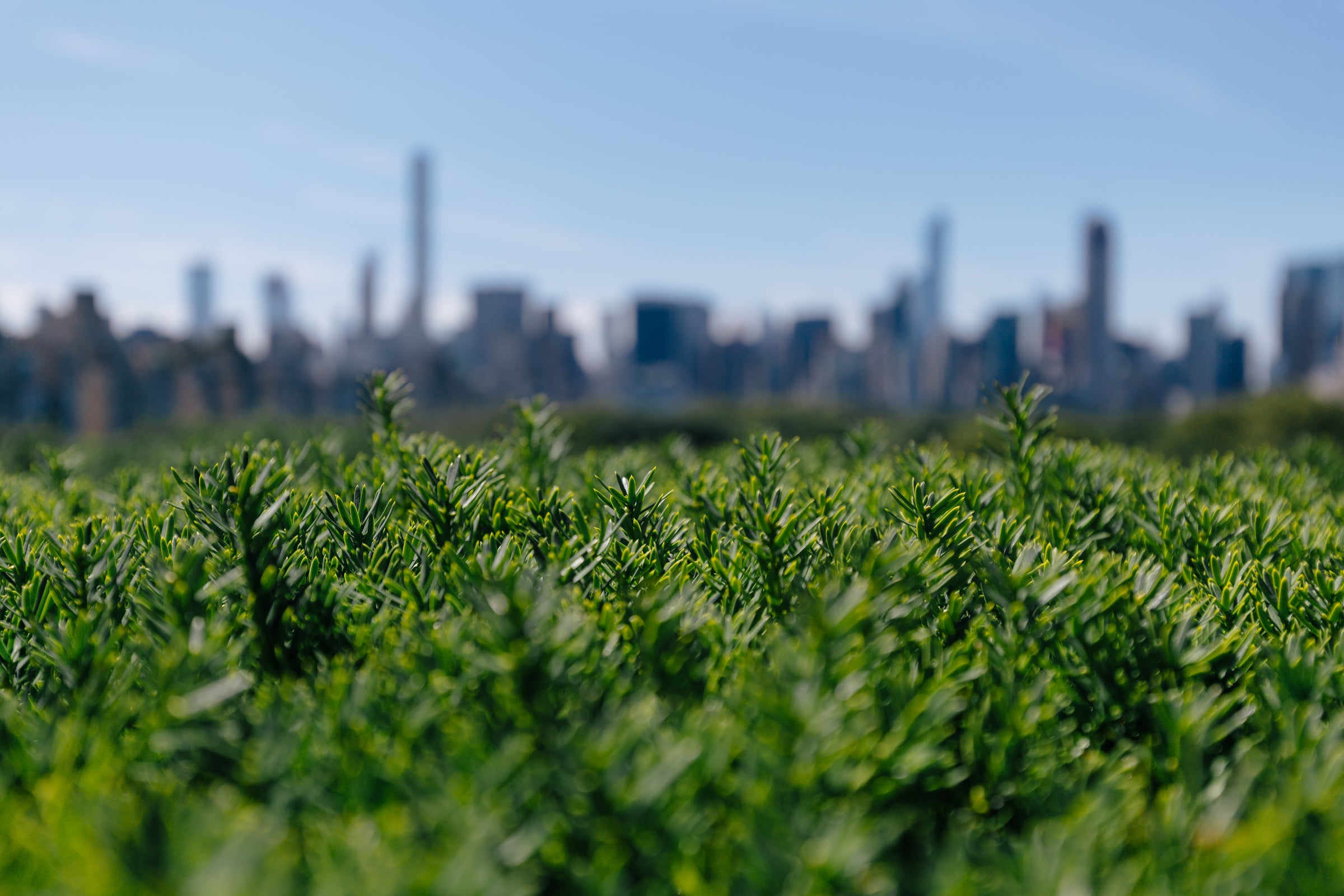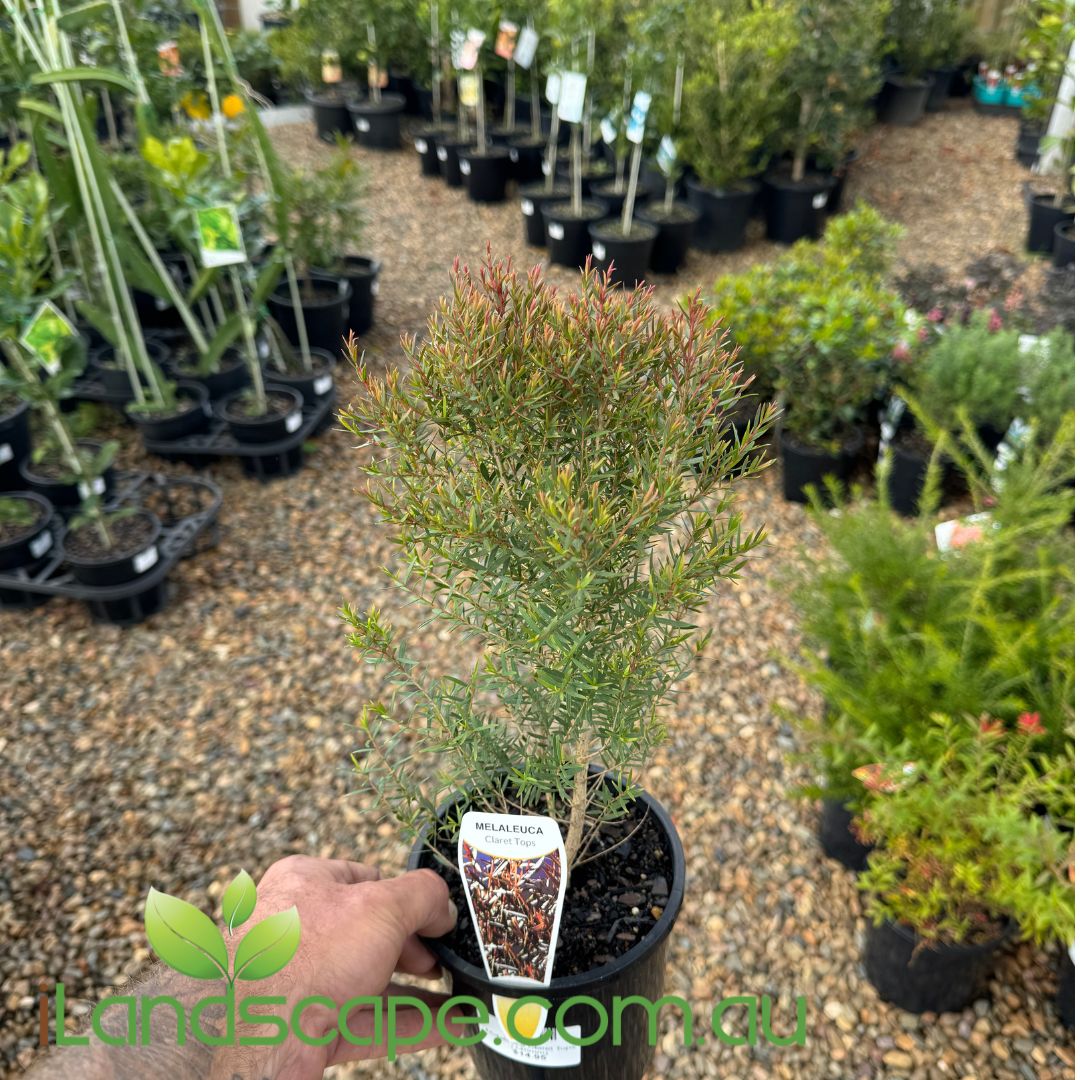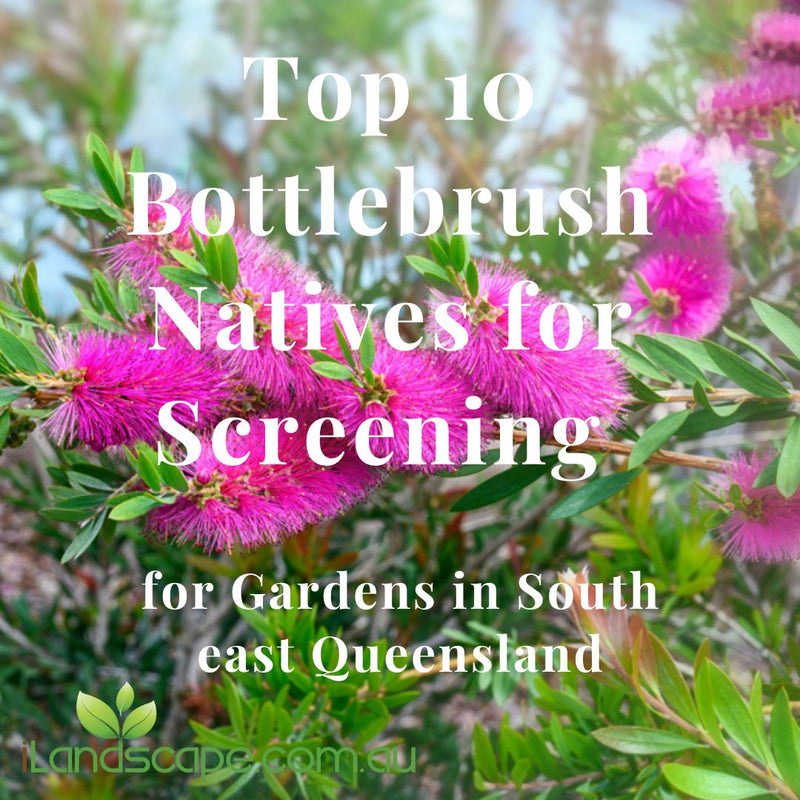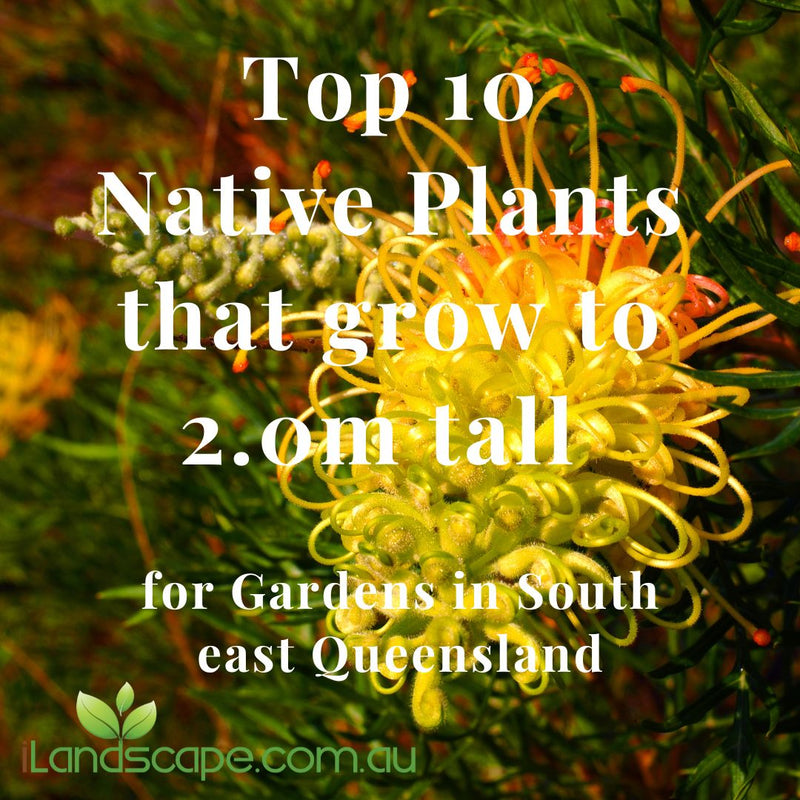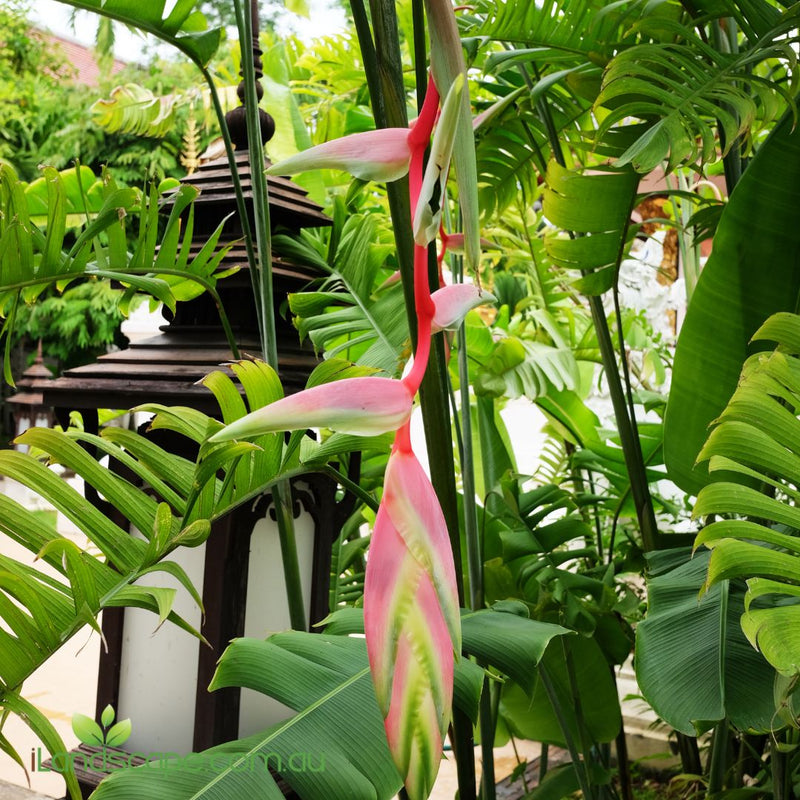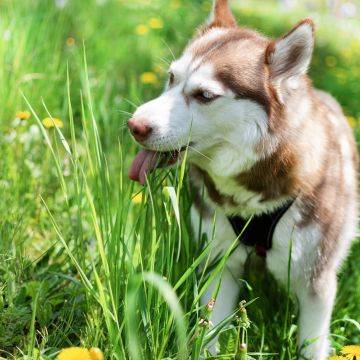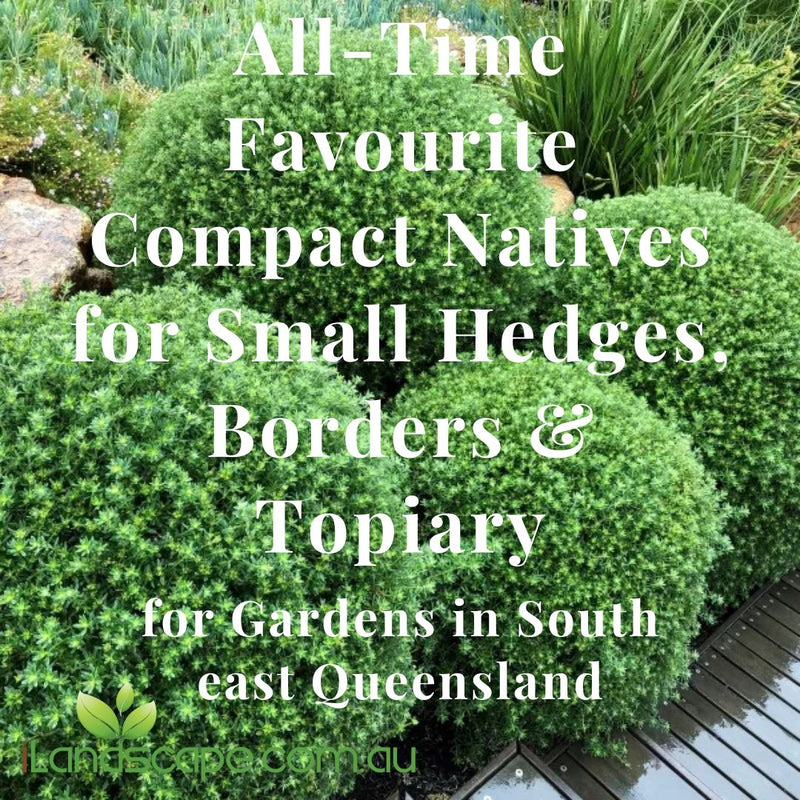All-Time Favourite Compact Natives for Small Hedges, Borders & Topiary
If you’re looking for small, easy-care native plants to add structure, colour, and texture to your garden, you can’t go past these all-time favourites. These compact growers are perfect for low hedges, borders, mass planting, and even topiary. Many respond beautifully to light trimming, allowing you to shape them into neat balls, cones, or low formal hedges – giving your landscape a modern native twist.
Here’s our top collection of compact native plants that grow well on the Sunshine Coast and can be shaped to suit your space.
1. Callistemon ‘Low Rider’
A tough, compact bottlebrush with soft green foliage and red flowers in spring. Grows to around 50cm–1m high, perfect for low borders or mass planting.
2. Callistemon ‘Little Silver’
Striking silver-grey foliage with occasional red flowers. Great for small hedges or feature planting. Grows to around 1m high and wide.
3. Callistemon ‘Little Caroline’
A soft pink flowering bottlebrush with neat growth. Perfect for low borders, growing to around 1m high and wide.
4. Callistemon ‘Little John’
A classic dwarf bottlebrush with deep red flowers and blue-grey foliage. Excellent for low hedges and shaping. Grows to 1m high and wide.
5. Callistemon ‘Better John’
An improved form of ‘Little John’ with neater growth and better flowering. Perfect for low hedging, topiary balls, or pots.
6. Grevillea ‘Strawberry Pops’
Bright pink flowers cover this compact shrub. Great for borders or small feature planting. Grows to around 1–1.2m high and wide.
7. Westringia ‘Zena’
A small-leaved coastal rosemary with soft grey-green foliage and pale mauve flowers. Excellent for shaping into low hedges or balls.
8. Westringia ‘Blue Gem’
Compact and bushy with vivid purple flowers. Great for hedges, borders, or colourful screening up to 1.5m high.
9. Westringia ‘Naringa’
Fast-growing and ideal for formal or informal hedging up to 2m. Neat foliage and soft lavender flowers make it easy to clip into shape.
10. Westringia ‘Low Horizon’
A dense, low-growing groundcover form. Great for mass planting or low edging, staying around 30cm high.
11. Westringia ‘Mundi’ (White)
Low-growing and spreading, with white flowers. Ideal for groundcover, cascading over walls, or mass planting.
12. Melaleuca ‘Claret Tops’
Compact shrub with rich red new growth. Great for small borders or shaping into rounded forms.
13. Melaleuca thymifolia ‘Purple Lace’
Soft, fine-leaved shrub with purple frilly flowers. Perfect for low borders, rockeries, or low-maintenance hedges.
14. Melaleuca armillaris ‘Pink’
A narrow-growing form with soft pink flowers. Great for narrow hedges or screening in tight spaces.
15. Melaleuca laterita (Dwarf Form)
Compact shrub with eye-catching orange bottlebrush flowers. Perfect for feature planting or small garden spaces.
16. Melaleuca ‘Mini Mel’
Dense and compact, ideal for low, clipped hedges or natural borders. Responds well to shaping.
17. Melaleuca ‘Mini Quin’
Another great dwarf option, ideal for formal hedging or small feature planting.
18. Melaleuca ‘Pink Lace’
A small, soft-foliaged shrub with masses of soft pink flowers. Perfect for borders or cottage-style gardens.
Why Prune or Shape Native Plants?
Many of these natives respond well to light, regular pruning. Shaping them after flowering helps maintain their density, encourages fresh growth, and can give your garden a formal or modern look using low-maintenance Australian plants. They make excellent low hedges, rounded feature balls, or small clipped screens—perfect for both contemporary and traditional garden styles.
Shop Small Native Shrubs & Hedges at Garden Centre Sunshine Coast
Browse our full range online or visit us in-store to see our great selection of compact native shrubs perfect for small gardens, borders, and topiary.
